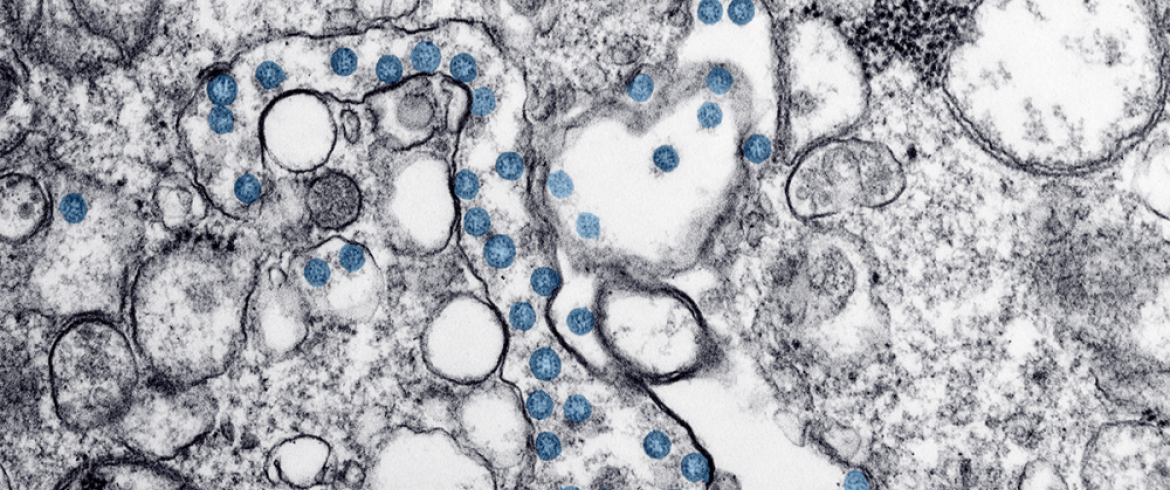
From the cleaning solutions disinfecting kitchen counters to the ventilators helping keep patients alive, chemical and biomedical engineers have a big role to play in humanity’s efforts to fight COVID-19.

The opportunity to help society is what engineering is all about, said Bruce Locke, a distinguished research professor of chemical and biomedical engineering at the FAMU-FSU College of Engineering.
“Engineering students who are interested in making contributions against these kinds of viral pandemics, they can play a role,” he said. “Careers in these fields can help society prepare for and mitigate serious health crises like this one.”
Locke and teaching faculty member Stephen Arce recently explained what those engineers are doing now and how they might help in the future:
How can the work of chemical and biomedical engineers help prevent the spread of this coronavirus or other infectious diseases? Can you give some examples of things they have already developed that we are using during this crisis?

Locke: Chemical engineers and bioengineers work in a wide range of industries, including consumer products and pharmaceuticals. They work in the manufacturing of all types of chemical disinfectants, like alcohol, hydrogen peroxide and bleach, as well as the consumer products that these chemicals are incorporated into. Companies are already rapidly expanding production of all these items. Chemical and bioengineers are also involved in the scale-up and operation of bioreactors and other systems for vaccine and anti-viral medicine production.
Biomedical engineers work on devices to assist in treating patients. For example, they work on the design and manufacturing of ventilators for treating patients who are already sick. They also work on technologies for rapid detection of viruses as well as diagnosing viral diseases.
Will their efforts involve developing new and better products, or do we simply need to produce more of these quickly, considering that COVID-19 is already here
Locke: I think the main challenges will be in making more new processes quickly. For example, there may be a need for improved, efficient and less costly ventilators for assisting patients who are already sick. Engineers will also work on the manufacturing and production of new devices for detection of the virus. After development, scaling up manufacturing to efficiently mass produce these tools will be important.
Arce: In terms of vaccine development and production, the industry is set up to produce large batches of drugs, not small to mid-sized batches needed in a ‘quick response’ scenario. Running a small batch through a large system is not only costly, but there are major scaling issues that affect the yield of the process. Contract manufacturers and other small-to-mid-scale facilities will certainly play a major role in our response to this pandemic and gain more attention after this crisis.
How long does vaccine development typically take and how quickly might production happen on an accelerated schedule to respond to this pandemic?
Locke: Current estimates for vaccine development are 12 to 18 months. The limiting factors are the human trials and safety tests that take up to about 12 months. However, manufacturing in large quantities requires a large investment and has technical challenges that need careful attention to quality control, sterility of manufacturing and purity of the final product. Recent news suggests that some vaccines may be available for emergency use in early 2021.
Companies have reactors that are designed to make other products, but it is often not easy to change from one product to another. I think the point here is that there are several stages needed: First, quickly making enough of a small batch for initial testing and second, making a lot of a tested product in large doses once it is ready. Both have different requirements.
What are the major problems chemical or biomedical engineers are working on today that could help mitigate a situation like this in the future?
Arce: In wealthy countries, there is a focus on combating heart disease and cancer, and in poor countries the fight is with infectious diseases. Countries in the middle are hit with a double-whammy of both types of health issues in their populations. Interventions during visits with physicians, telemedicine and wearable medical technology may all play a role in addressing these issues.
From a broader perspective, there is a boom in freelance design of personal protective equipment for healthcare workers. While a rapid response is needed, my main concern lies in the quality control of these solutions and ultimately the safety of users. Perhaps after all of this, the U.S. Food and Drug Administration will take a look at fast-tracking new technology generated by rapid prototyping.
